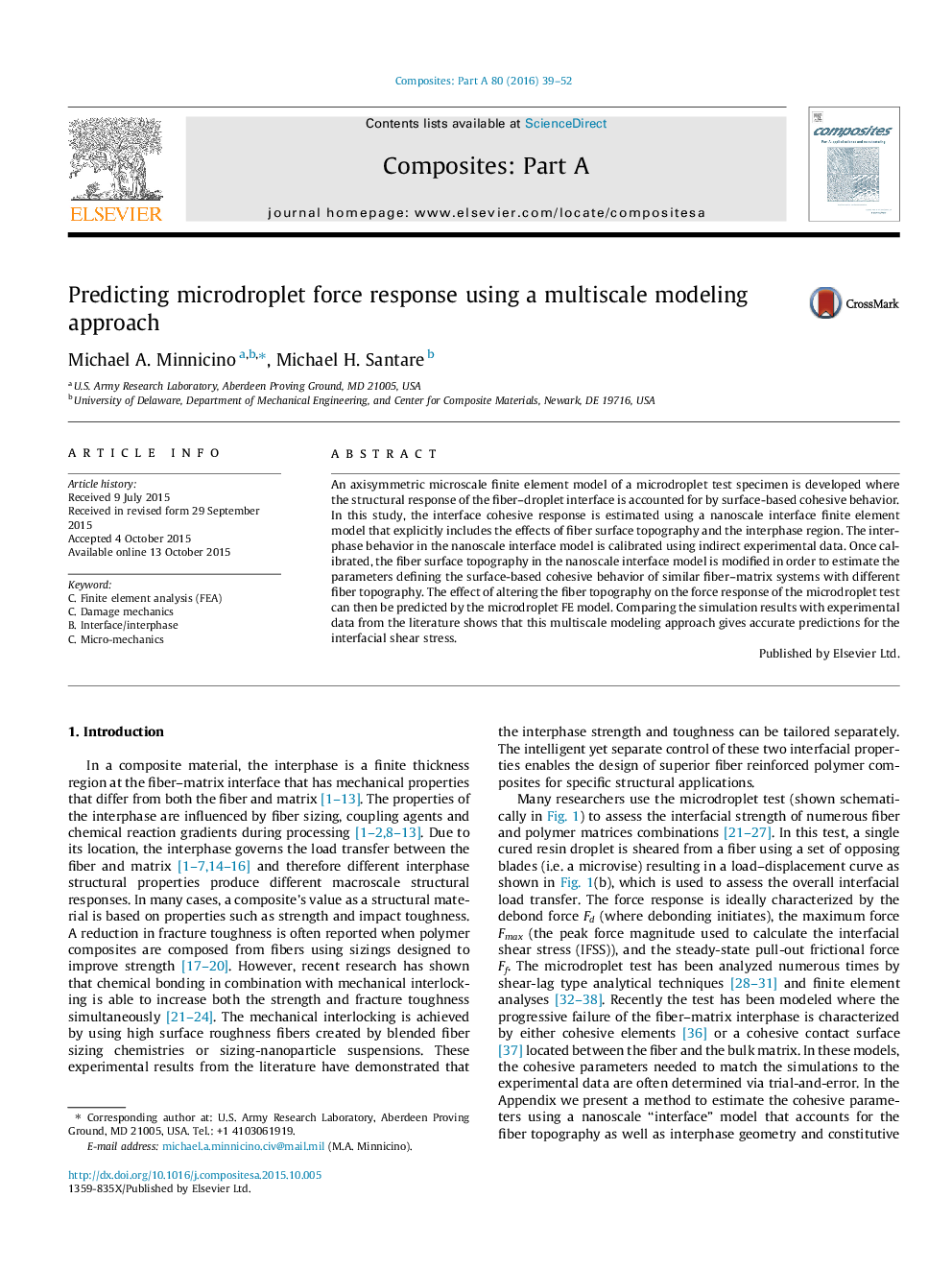| Article ID | Journal | Published Year | Pages | File Type |
|---|---|---|---|---|
| 1465803 | Composites Part A: Applied Science and Manufacturing | 2016 | 14 Pages |
An axisymmetric microscale finite element model of a microdroplet test specimen is developed where the structural response of the fiber–droplet interface is accounted for by surface-based cohesive behavior. In this study, the interface cohesive response is estimated using a nanoscale interface finite element model that explicitly includes the effects of fiber surface topography and the interphase region. The interphase behavior in the nanoscale interface model is calibrated using indirect experimental data. Once calibrated, the fiber surface topography in the nanoscale interface model is modified in order to estimate the parameters defining the surface-based cohesive behavior of similar fiber–matrix systems with different fiber topography. The effect of altering the fiber topography on the force response of the microdroplet test can then be predicted by the microdroplet FE model. Comparing the simulation results with experimental data from the literature shows that this multiscale modeling approach gives accurate predictions for the interfacial shear stress.
